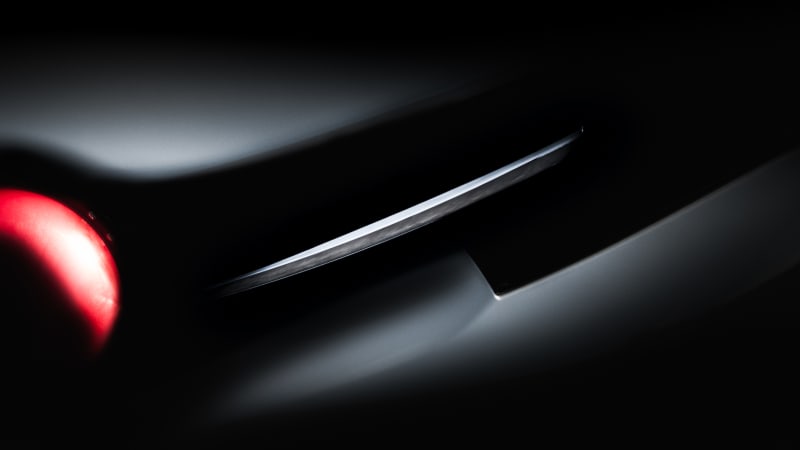EPA says automakers ahead of schedule for 54.5 MPG by 2025

Remember, the target is 54.5 miles per gallon by 2025. Today, the CAFE level is a little over 30. How we get from here to there is something the US Environmental Protection Agency (EPA) is monitoring closely. Thus, the EPA just released an annual flash report on how the auto industry is progressing towards meeting the nation's fuel economy goals.
Overall, the industry is doing almost 10 grams per mile (equivalent) better than the rules require.
The good news is that the industry is a bit ahead of schedule. In the report (see page iii), the EPA breaks things down by automaker based only on MY12 numbers. Tesla is at the top of the list (which is ranked by over-compliance with 2012MY CO2 standards), but for our money, the real leader is Toyota. The Japanese automaker built the second-highest number of vehicles (2,020,248, after General Motors' 2,364,374) but racked up the most net 2012 over-compliance credits (13,163,009 metric tons). That's an average of over 6.5 metric tons per vehicle. The next closest is Honda, with just over five metric tons of credits per vehicle. Given the MPG fiasco with Hyundai and Kia, the EPA says, "we are excluding Hyundai and Kia data because of the ongoing investigation into their testing methods," but overall, the rest of the industry has credits worth 25,053,168 metric tons of CO2, which means it's doing almost 10 grams per mile (equivalent) better than the rules require. Go team.For now, the numbers in this report (and there are a lot more of them - get the 59-page PDF for yourself here), can't really be used to understand everything from the first year of the new CAFE program. The EPA writes, "Because the program allows credits and deficits to be carried into future years, at the close of the 2012 model year no manufacturer is considered to be out of compliance with the program. ... Compliance with the 2012 model year standards can't be fully assessed until the end of the 2015 model year."
There are a more interesting tidbits in the report, such as the fact that Fisker produced 1,415 model year 2012 vehicles, Tesla made 2,952. Remember, too, that CAFE numbers don't equal the fuel economy you see in your daily drives. In the real world, the 54.5 CAFE level will be about 40 mpg, and the average fuel economy today is around 25 mpg, so we have a ways to go, no matter how you measure it. Show full PR text EPA Report: Data Show Automakers on Track in meeting Greenhouse Gas Standards
WASHINGTON - Today, the U.S. Environmental Protection Agency (EPA) released a Manufacturers Performance Report that assesses the automobile industry's progress toward meeting greenhouse gas (GHG) emissions standards for cars and light trucks in the 2012 model year - the first year of this fourteen year program. The report reveals that consumers bought cleaner vehicles in the first year of the program than the 2012 GHG standard required, and that automakers are off to a good start in meeting program requirements.
"President Obama's Climate Action Plan calls for reductions in greenhouse gases and this report shows that the automakers are off to a good start reducing harmful emissions. EPA's greenhouse gas standards for light duty cars and trucks are already reducing the dangerous carbon emissions that contribute to climate change while saving consumers money at the pump, and strengthening our nation's energy security by relying less on foreign oil," said EPA Administrator, Gina McCarthy. "Our first official glimpse at how the auto companies are doing shows that they are rising to the challenge of meeting these standards, and realizing these benefits for our families and our country."
The data show that in model year 2012, the industry reduced tailpipe carbon dioxide emissions, and also used the optional flexibilities built into the standards. Those flexibilities include emissions credits for improvements in air conditioning systems, and a system that allows transfer of emissions credits from year to year, and among manufacturers. These flexibilities allow greater emissions reductions, lower compliance costs, and more consumer choice, all while providing manufacturers with options on how and when to make reductions. Because of the program's multi-year structure, EPA will not make formal compliance determinations for the 2012 model year until 2015. EPA will be closely tracking progress towards compliance, and intends to issue annual Manufacturers Performance Reports on the program.
The trend towards more efficient, cleaner cars and trucks continued in model year 2012. According to EPA's most recent Fuel Economy Trends Report, fuel economy improved by 1.2 mpg in 2012 compared to 2011, the second biggest improvement in the last 30 years. Further, in 2013 there were twice as many sport utility vehicle models that achieved at least 25 miles per gallon (mpg), and seven times as many car models that achieved 40 mpg or more, compared to just five years ago.
The GHG emission standards are projected to cut 6 billion metric tons of greenhouse gases over the lifetimes of vehicles sold in model years 2012-2025 - more than the total amount of carbon dioxide emitted by the United States in 2012. The standards are also projected to save consumers who purchase a new model year 2025 vehicle more than $8,000 in fuel costs over that vehicle's lifetime.
More Information on the Manufacturers Performance Report: http://www.epa.gov/otaq/climate/ghg-report.htm
More information on Light Duty Vehicle Standards: http://www.epa.gov/otaq/climate/regs-light-duty.htm
More information on GHG and Fuel Economy Trends: http://epa.gov/otaq/fetrends.htm
Source






